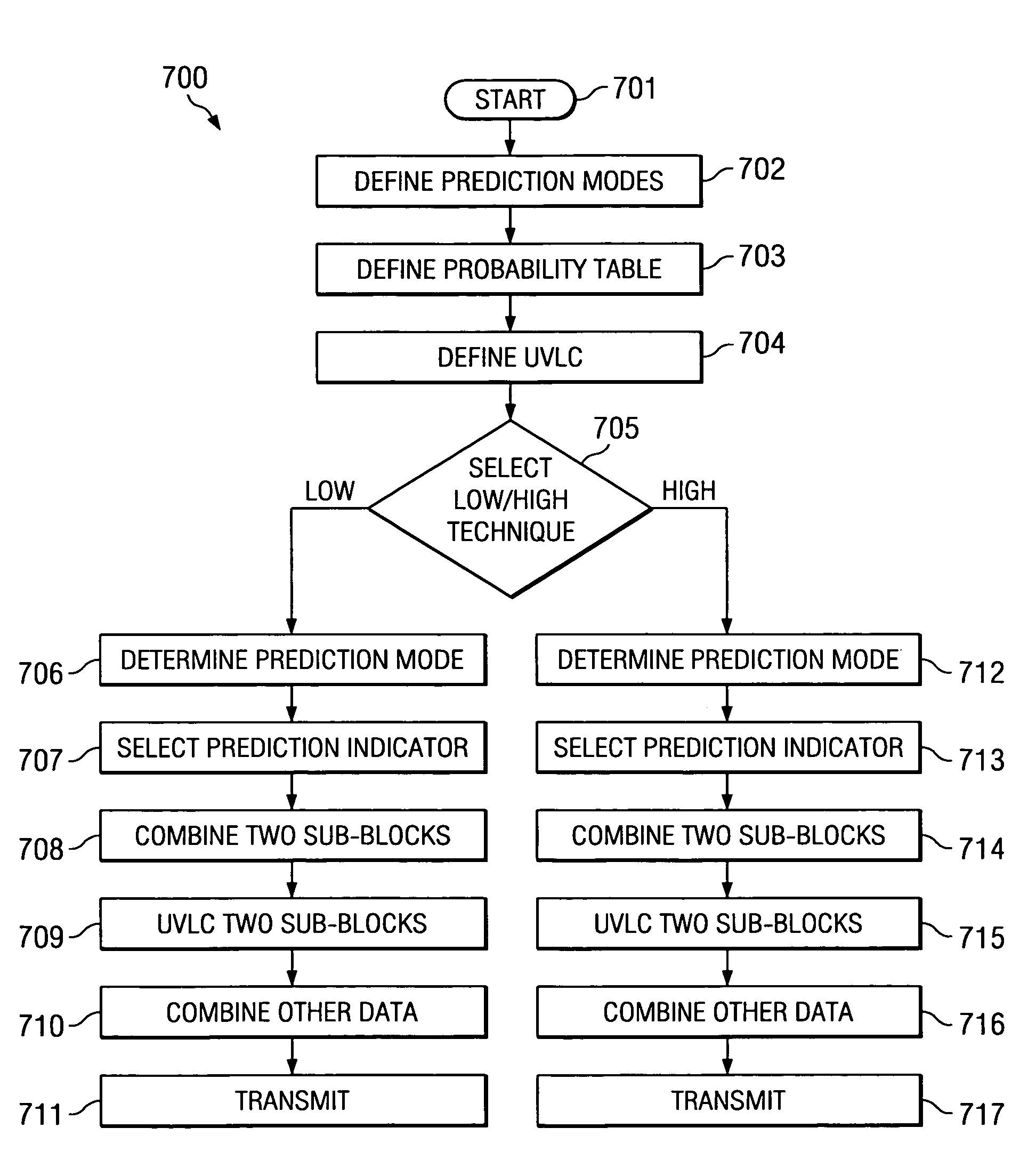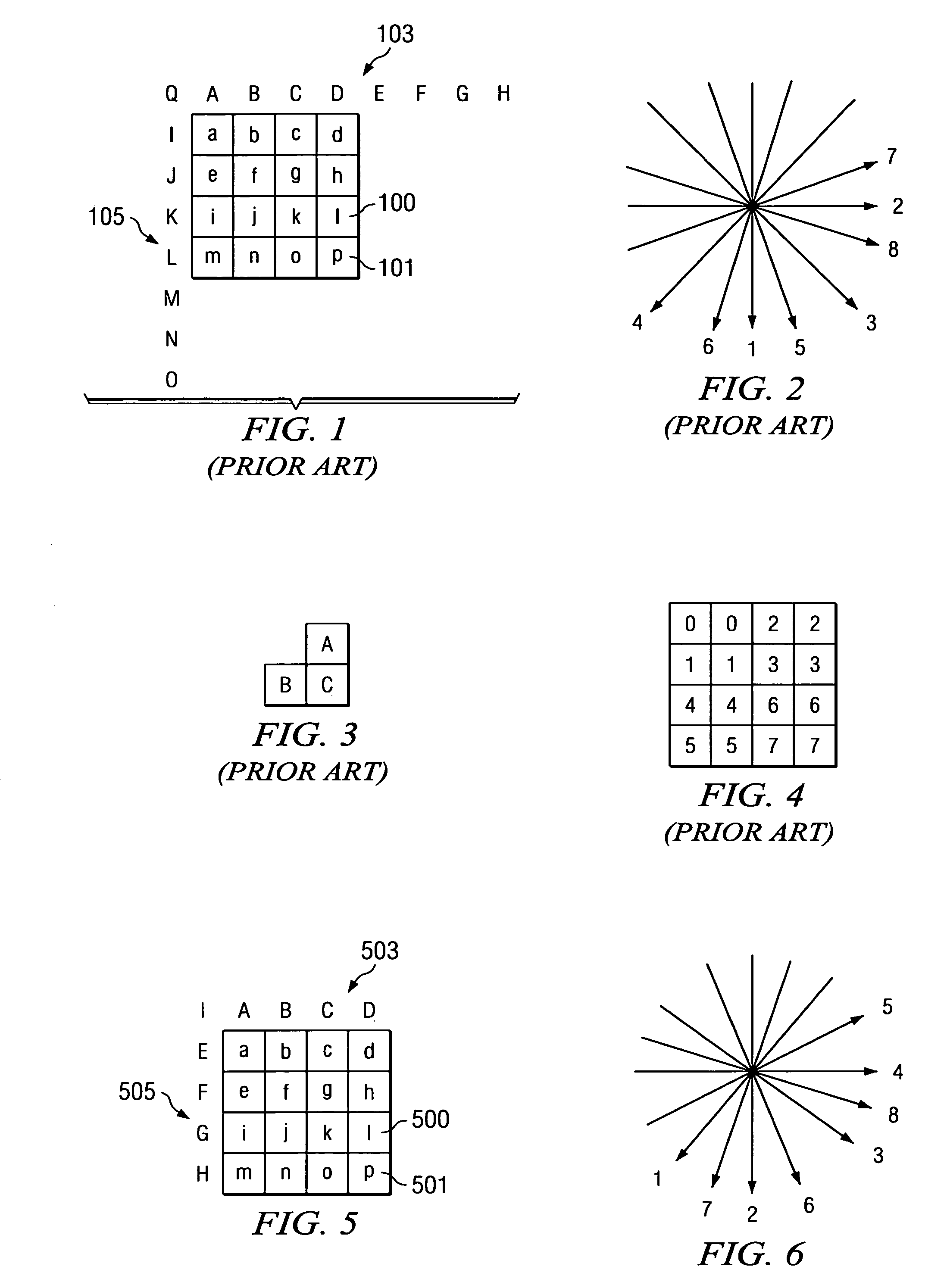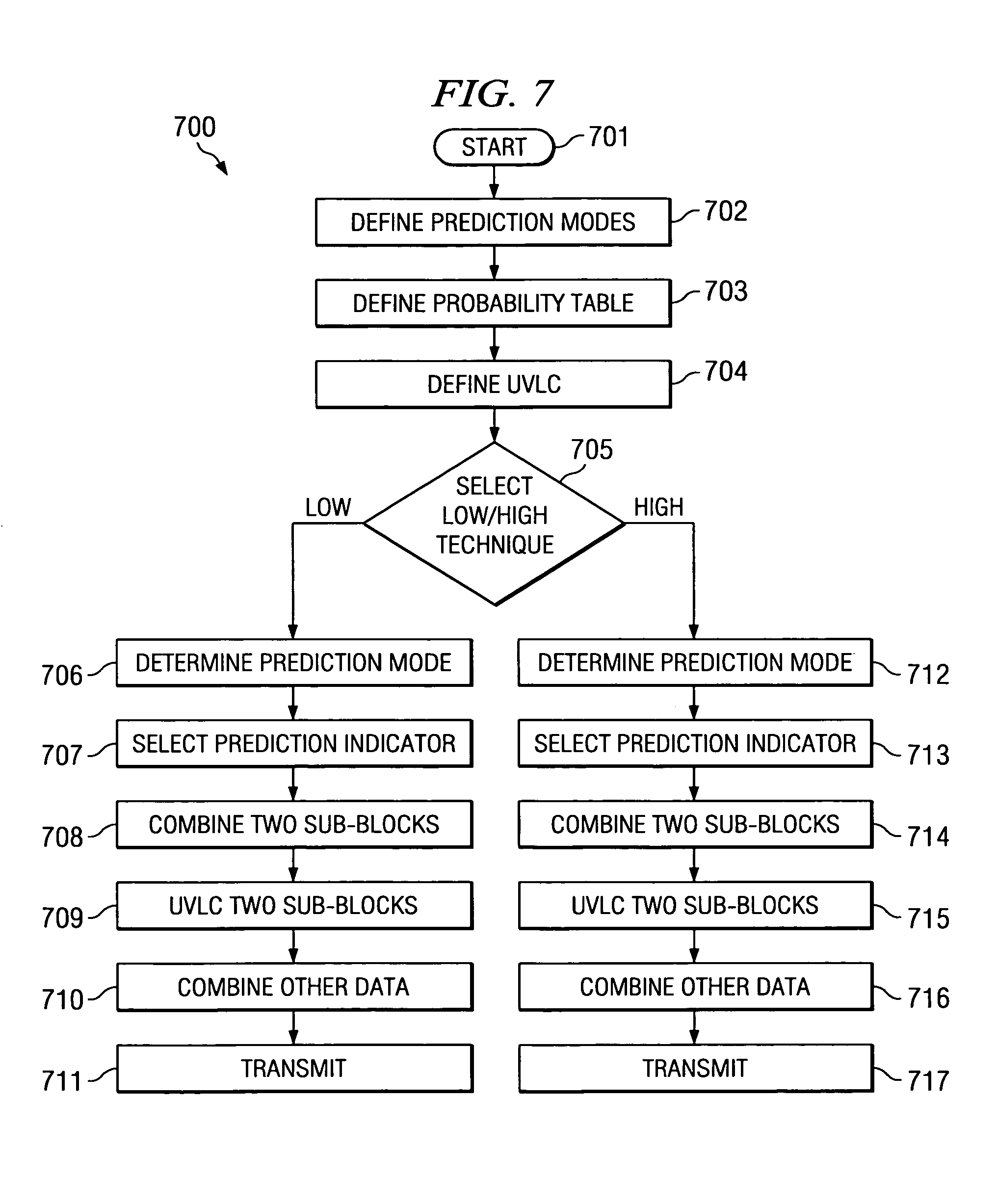Complexity-scalable intra-frame prediction technique
a prediction technique and complexity scaling technology, applied in the field of motion picture data compression, can solve the problems of increasing both memory requirements and computational complexity by a factor about four, and the low-end h.26l application complexity is not favorable, and the pixels e through h may not be availabl
- Summary
- Abstract
- Description
- Claims
- Application Information
AI Technical Summary
Benefits of technology
Problems solved by technology
Method used
Image
Examples
Embodiment Construction
[0042]The complexity scalable intra frame prediction method of this invention satisfies the needs of both low-complexity and high-complexity H.26L codecs. The memory and computational resource may be highly limited for low-end codecs, so a low-complexity intra frame prediction scheme is desired. On high-end codecs such as PCs, where memory and computational complexity are not a concern, coding efficiency is of high priority. This invention provides a complex and but highly efficient intra frame prediction technique. In addition, there is backward compatibility between the low-complexity and high-complexity techniques. Thus the high-end decoder can decode the bitstreams generated by the low-end encoder. This is achieved because the low-complexity intra frame prediction scheme is a subset of the high-complexity scheme.
[0043]The intra frame prediction technique of this invention operates as follows. Let: {0, 1, . . . M−1) be the M prediction modes supported with probability in descendi...
PUM
 Login to View More
Login to View More Abstract
Description
Claims
Application Information
 Login to View More
Login to View More - R&D
- Intellectual Property
- Life Sciences
- Materials
- Tech Scout
- Unparalleled Data Quality
- Higher Quality Content
- 60% Fewer Hallucinations
Browse by: Latest US Patents, China's latest patents, Technical Efficacy Thesaurus, Application Domain, Technology Topic, Popular Technical Reports.
© 2025 PatSnap. All rights reserved.Legal|Privacy policy|Modern Slavery Act Transparency Statement|Sitemap|About US| Contact US: help@patsnap.com



